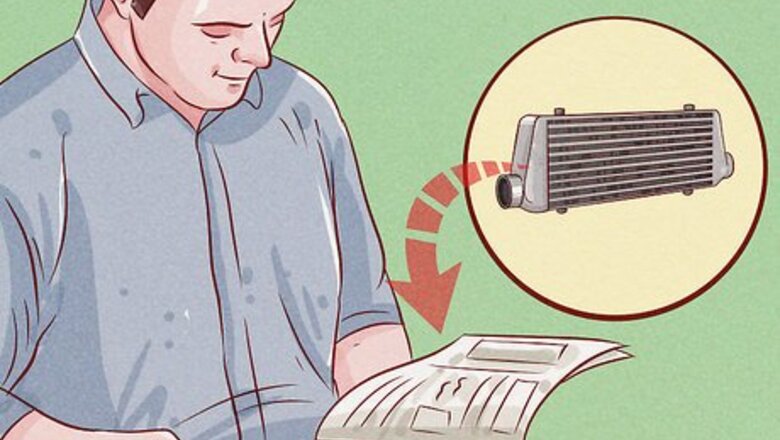
views
Removing the Intercooler
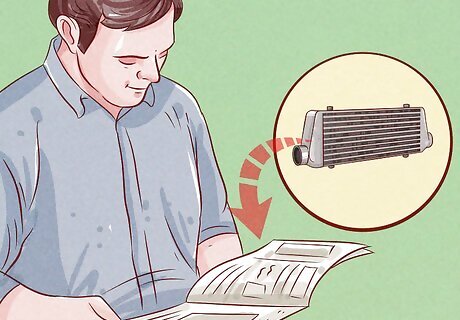
Read your user’s manual to remove your intercooler safely and properly. In general, you can remove the intercooler the same way for all types of cars and trucks. However, the particular instructions on how to take off your grill, bumper, and/or lights may vary from model to model. As a result, you must read over the instructions for your particular vehicle. You can find these in your owner’s manual or online.
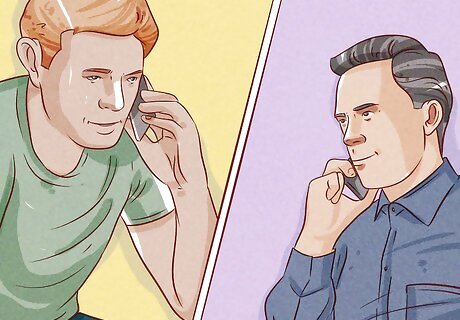
Seek help from a mechanic if you are unsure. If you are confused about how to remove the intercooler, search online to find a mechanic in your area or ask your friends and family for recommendations. Removing and cleaning the intercooler is a complicated process, and you don’t want to damage your vehicle if you are unsure about the steps.
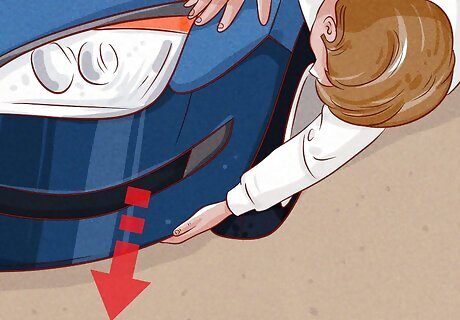
Take off the bumper of your car by unfastening the bolts along the front. Every make and model has a slightly different process to remove the bumper. In general, the bumper is fastened to your car by nuts and bolts along the hood. Pop your hood and look along the inside and along the wheel panels to find the bolts. Then, use a wrench to undo the bolts along the hood of the car and around the wheels. Once the bolts are removed, lift the bumper off of your car with moderate force. Depending on your make and model, you also may have to take off the grill and/or the headlights to do this. If this is the case, lift the grill straight up with the hood popped, and pull the headlights out gently. The total number of bolts will vary depending on the make of your car. Keep the hardware in a safe place so you don’t lose it.
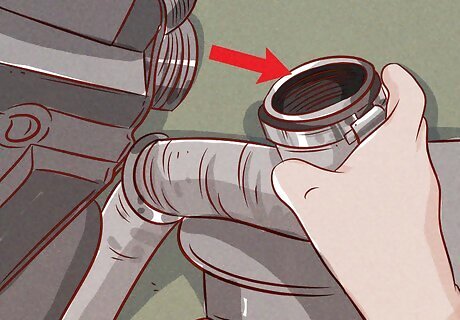
Pull the intercooler piping off of the intercooler so you can remove it. Place an oil pan underneath the intercooler piping so you can collect any oil that may drip out. The intercooler is connected to your engine and air filter by 2-4 pipes. To unhinge the piping from the intercooler, use a flathead screwdriver to unfasten the holding bands, twist the holding bands slightly, and gently slide it off. The particular location of these pipes depends on your intercooler and vehicle type, but they are usually located along either side on the bottom. Depending on your car and intercooler type, some of the piping may be flexible, while other parts may be hard and rigid.
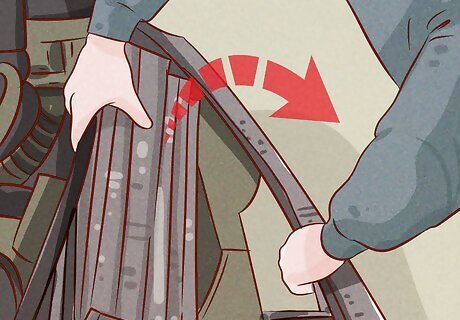
Unfasten the intercooler by pulling with gentle but steady force. Once you remove the piping, use a wrench to remove the bolts along the top of the intercooler. After you unfasten the intercooler, grip it from the bottom and pull it straight out. Be sure to keep all hardware in a safe place so you can replace it after you clean the intercooler.
Removing Oil and Debris
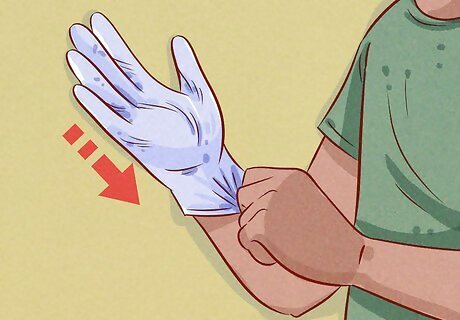
Put on a pair of gloves, a facemask, and a set of goggles. When cleaning an intercooler, you can get chemicals, oil, and debris on your hands. After you remove the bumper, put on rubber gloves to keep your hands clean. The chemicals you use may be hazardous to breathe in, so put on a facemask to protect yourself. In addition, wearing goggles is helpful to avoid eye irritations and flyaway debris.
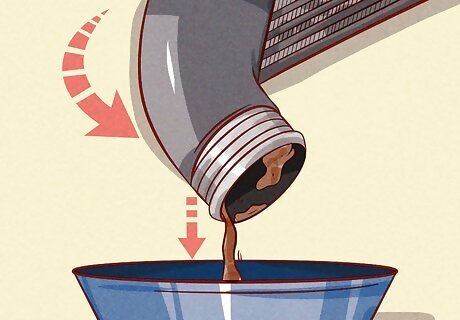
Pour any oil from inside the intercooler into your oil pan. Before you set down the intercooler, scoot the oil pan closer to you and tilt the intercooler so the oil pours out of it. The oil will come out where you disconnected the piping. Hold the intercooler upwards until no more oil drips out. If you do not have much oil inside the intercooler, you can skip this.
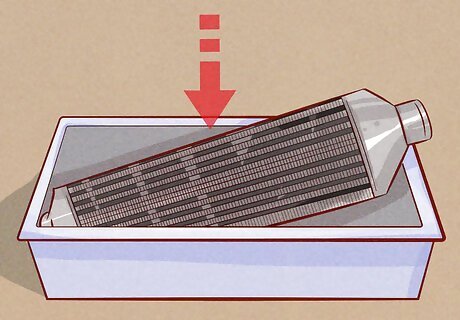
Lay your intercooler inside a large bucket or bin. Use a bucket or bin that is larger than the size of your intercooler. This way, you can easily cover the intercooler in cleaning chemicals. Use a container that you can throw away immediately after. Your container will be full of oil and gunk.
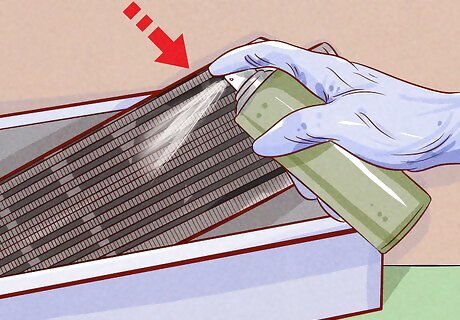
Spray degreaser over the outside of your intercooler. Press down on the spray nozzle of your auto degreaser can, and slowly move the stream across the outside of your intercooler. Hold the degreaser about 3–4 in (7.6–10.2 cm) from the intercooler as you cover every spot thoroughly to get the most debris off as you can. Then, turn the intercooler over and spray the other side. Most of the dark-colored debris will come off of your intercooler with a simple spray of degreaser.
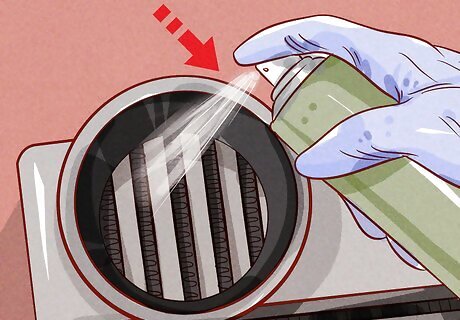
Apply the degreaser to the inside of the intercooler. Hold the intercooler on its side and spray the degreaser into the opening for the pipe. Be generous with your application to get all of the oil and debris out of the intercooler. This way, you remove the oil and debris from the inside of the intercooler. This makes it easier for the air to travel through the intercooler and your engine.
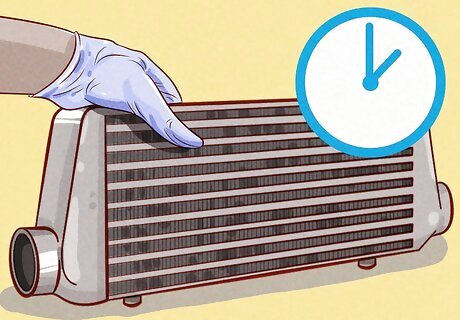
Hold up the intercooler and let the residue drip out. The degreaser removes most of the oil and debris from your intercooler. After you finish spraying the inside, lift up the intercooler to let the residue run out of the pipe opening. Hold the intercooler in the air for 30-60 seconds or so until most of the debris is gone.
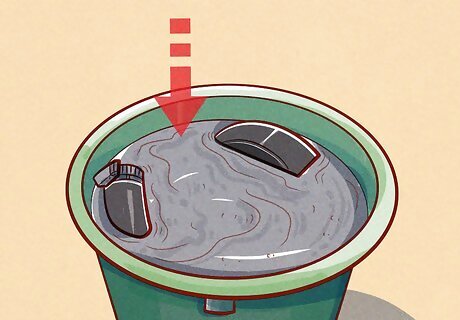
Fill the inside of the intercooler and the bucket with kerosene. Kerosene helps provide a deep, thorough clean to your intercooler. Place the intercooler horizontally in the bin, fill the bin halfway with kerosene, and pour kerosene inside the pipe opening to fill the inside. Filling the inside of the intercooler with kerosene helps remove stubborn oil or debris build-up. Once the inside is clean, your engine should run more smoothly.
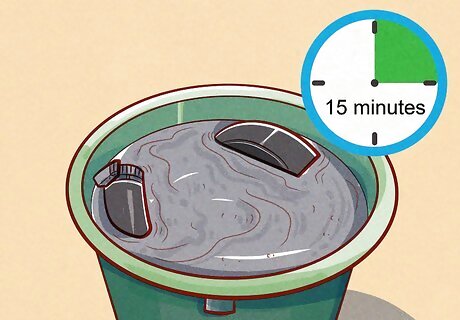
Let the intercooler sit in the kerosene for 15 minutes. Give the kerosene a few minutes to do its work. Then, lift the intercooler out of the bin and pour the kerosene from the inside into the container. Depending on how dirty your intercooler is, the liquid you pour out may look dark or black.
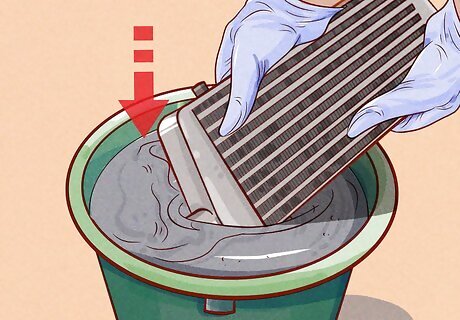
Do another wash of kerosene if your intercooler is still dirty. By now, most of the dirt and debris should be gone from the outside of your intercooler. The inside may still look dark in some spots, depending on how dirty your intercooler is. If this is the case, pour the dirty kerosene into an empty plastic container (like an empty kerosene bottle), and fill the bin halfway with fresh kerosene. Then, fill the inside of the intercooler with kerosene again. Let the kerosene sit for 15 minutes and then pour it into the bin. Use a funnel to help you pour the dirty kerosene into the bottle. Do as many kerosene soaks as you need to until your intercooler is clean. Your intercooler is clean when the used kerosene is no longer dark or black.
Replacing the Intercooler

Dry out your intercooler before you replace it. After your intercooler is clean, set it on your driveway or a woodblock in a sunny spot. Leave the intercooler in the sun for 2-5 hours until there are no more wet spots. Your intercooler is ready to go back in your car when the kerosene has completely evaporated. If you set the intercooler on the grass, your grass may die due to the kerosene.
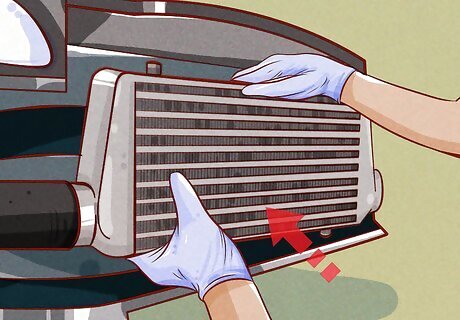
Place the intercooler back in its spot at the front of your engine. Pop your hood, lift up your intercooler, and put it back into your car's front end. Since you already installed the intercooler, the metal unit should easily fit back into place. Then, simply line the pipes up with the correct openings, and fasten the coupling back into place. The coupling secures the pipes to the intercooler. If you need help putting the intercooler back into place, search online to find instructions based on your particular vehicle model and intercooler type.
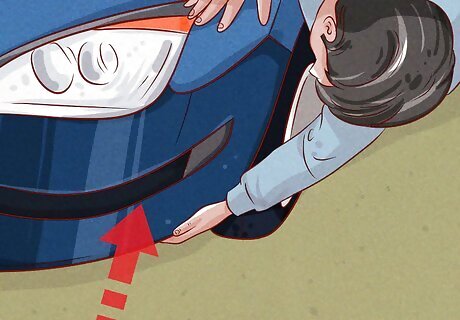
Replace the bumper after you put the intercooler in place. After the intercooler is back inside your car, take your bumper and line it up with the front end of your car. Push the bumper into place 1 side at a time. Then, pop your hood so you can replace the nuts and bolts. Tighten the bolts in place using your fingers or a wrench, and make sure they are tightened all the way so they stay in place. Double-check along the wheels and hood of your car to ensure you replaced each of the bolts. If you are confused about how to properly replace the bumper, search online to find tutorials for your particular car. You can also ask a mechanic for assistance if necessary.



















Comments
0 comment